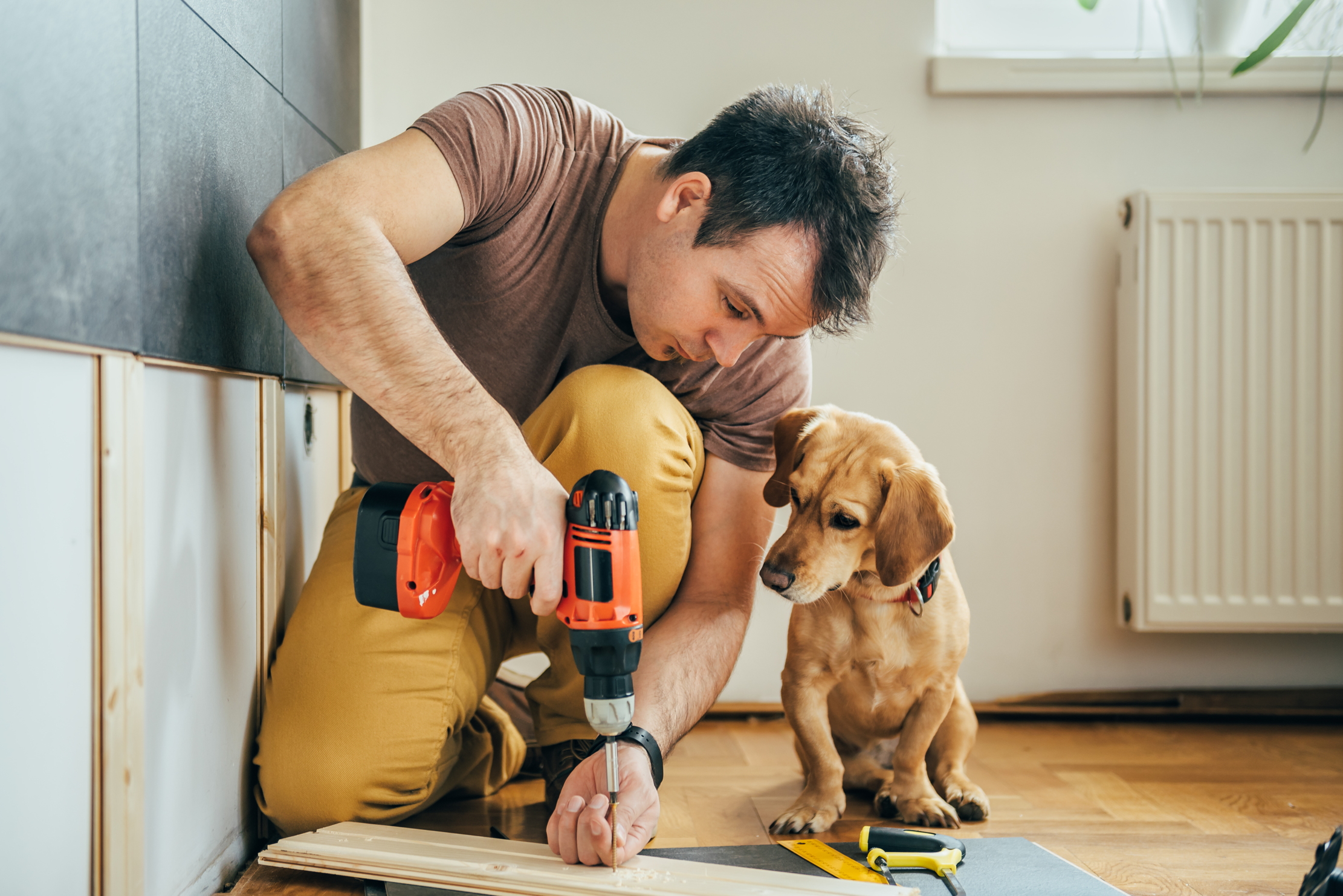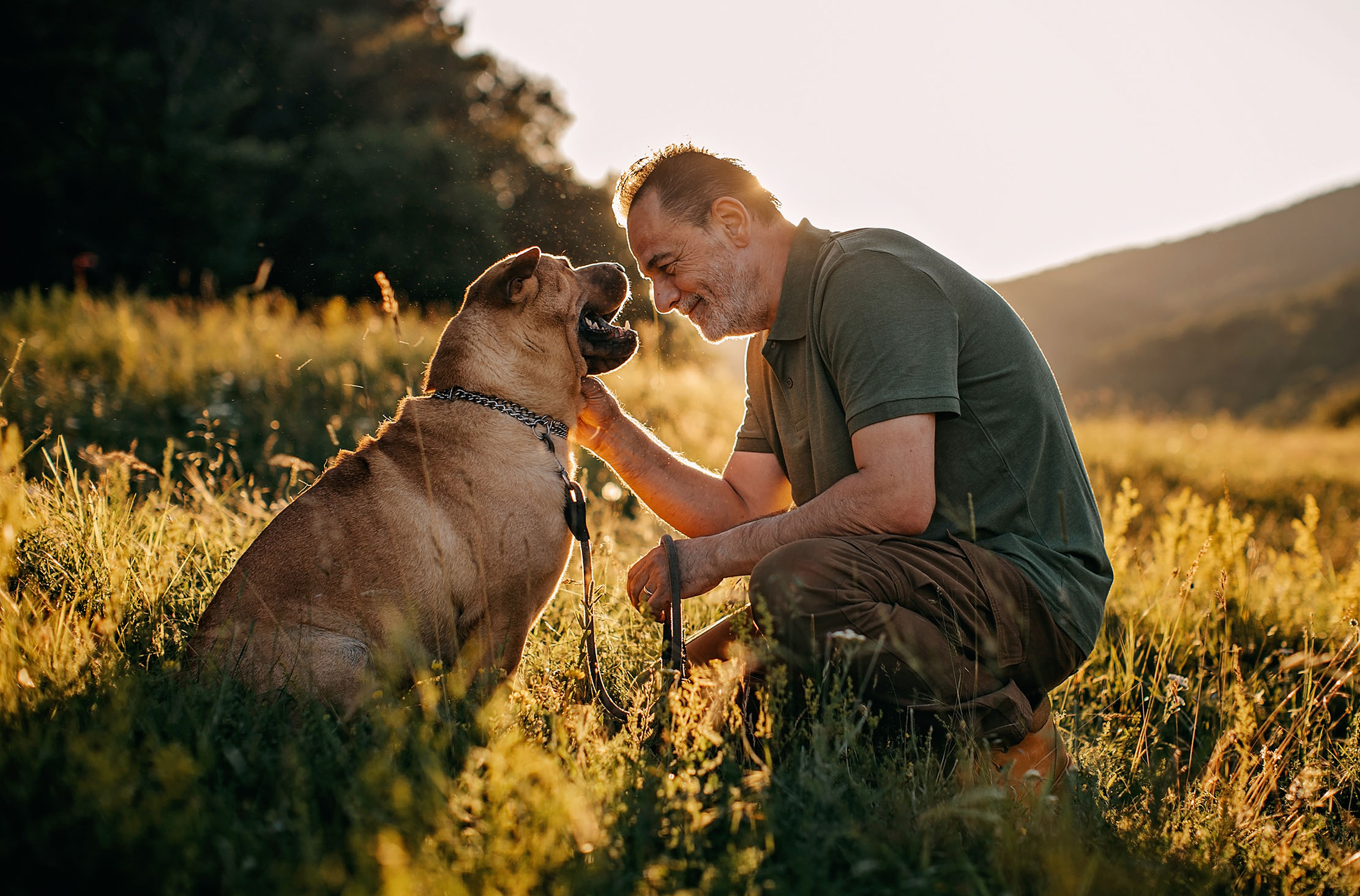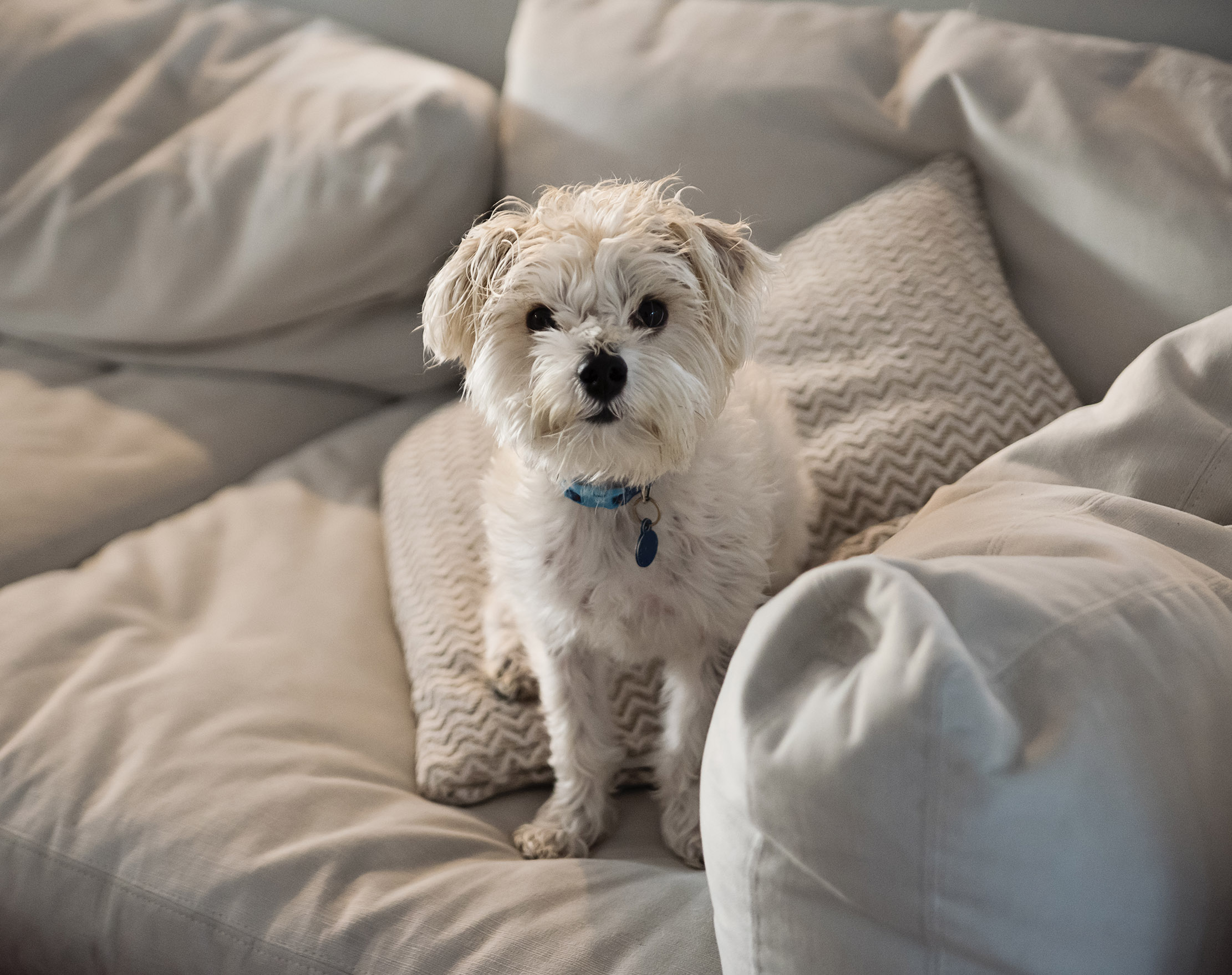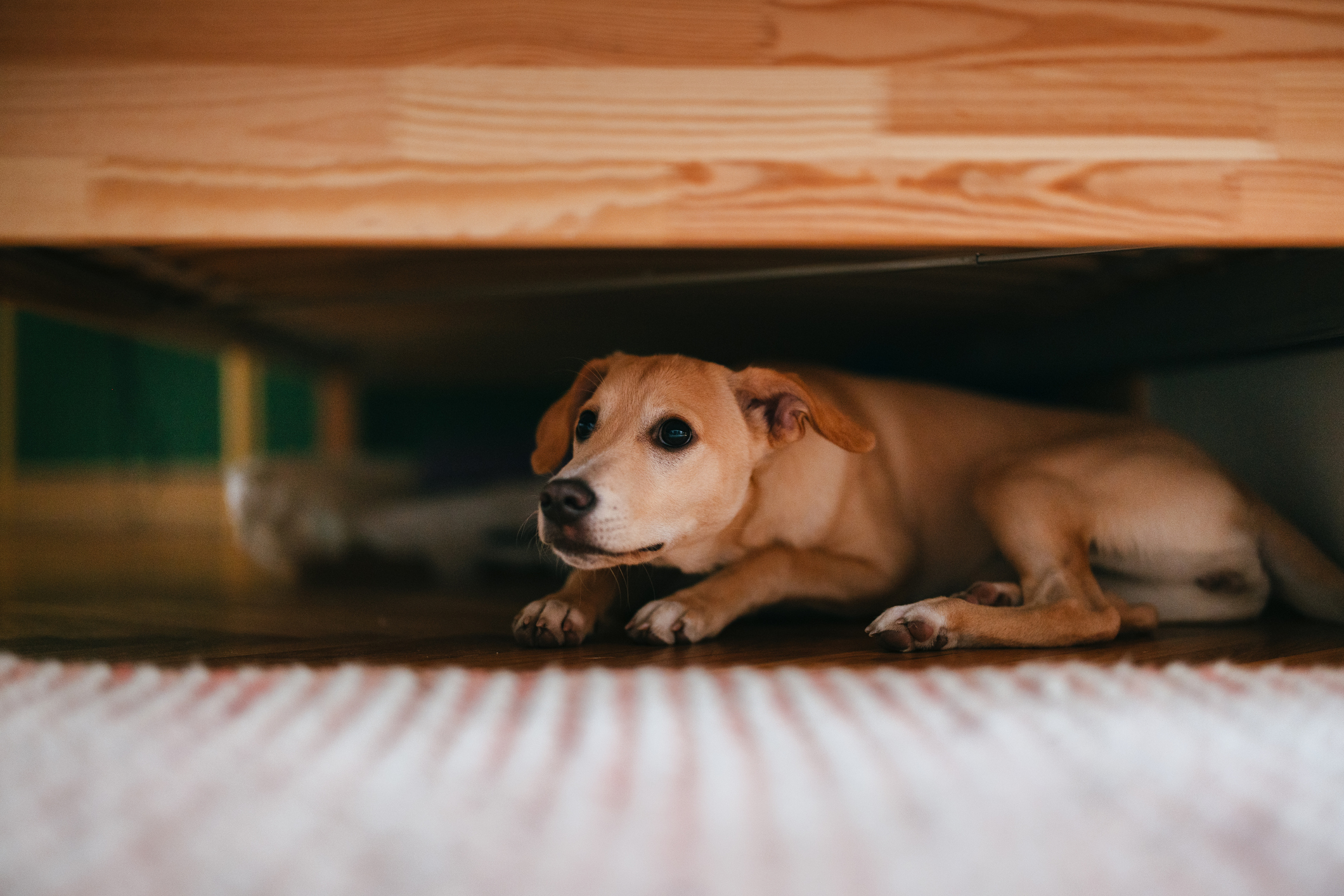How to stop your dog from being protective and barking at builders
Barking can be annoying and unsettling for visitors. Ben Randall looks at how to get a little peace and quiet.


Sometimes, you can have a dog that is as good as gold. And yet, the sudden arrival of a new person to the house, such as a builder, or electrician, or (traditionally) a postman, can lead to unwanted barking. There's nothing aggressive here, but it's undoubtedly annoying and can make visitors feel uncomfortable. This is the situation facing today's reader, who sent me an email at paws-for-thought@futurenet.com asking for some advice.
Hi Ben,I am trying to figure this issue out. I have a two-year-old Norwich terrier called Gwen. She was born to a family home, but the lady was diagnosed with cancer and wasn’t in a position to look after a puppy, so Gwen then went to an eminent Norwich breeder and international judge in East Riding. She was with other dogs in kennels, apparently she was bullied a little, because of her bloodline they did try to get her in pup, but that didn’t happen.So when I needed a new dog I rang the breeder and was offered Gwen. I picked her up on New year’s day this year; she is perfect in every way, devoted to me, good on the lead, out in the deer park comes to call, never runs off, sits in cafes, travels well, good with children, cats, and other dogs (she can be a bit bossy if they are too lively). I have never seen her growl at anything or anyone. She lives with an older Norwich and they get on very well.But I am having work done on my house. So if a builder comes in, she barks and runs to me to tell me that the builder has come in. She does this every time they move, but only if I am in the house. When I am out of the house she is as good as gold — not a peep— and the builders can come and go as they please with no barking.She loves the builders/painters/plumbers (she sits on the painter’s lap whilst he paints the stairs). She loves people.Why is this happening ? And how do I stop it? Currently, I throw her a squeaky toy to distract her, which is fine if someone just comes to the door, but if they come in and out, I can’t be there all of the time to throw a toy — E.A., Norfolk
Many thanks for your question! As with all questions, I can only go off the info I've received, so there may be other, potential angles we can look at, but let’s go with what we’ve got.
So your dog is perfectly behaved, but when there are builders (or other visitors) in your house, the dog seems to bark at them. When you are not there, she doesn’t bark. This tells me, as a trainer, that the dog is in a slight ‘protection mode' of you. The dog gets stressed when people enter your house and space and it feels that it must protect the place and you. A dog that is happy and content and trusts its owners, will see an owner that takes charge of these situations. The dog shouldn’t have to worry about them
You also mentioned that you throw a toy to distract the dog. Unfortunately, all you are doing is telling the dog, ‘If I bark, she throws me a toy as my reward’.
What I’d like you to look at is how you are with the dog around everyday life. What I mean by that is, if a dog is behaving this way, there’ll be other command behaviours that aren’t taught correctly or solid enough. It’s never rarely one problem, it’s an accumulation of problems that are creating the barking.
So it will be a lack of respect for your commands, and a slight stress and worry that she has to take control.

1. Back to basics with foundation commands
I’d like you to re-do some of your foundation commands. Get the dog to sit patiently at mealtimes, for example, and when you’re doing things in and around the house. This can be covered in my articles ‘steadiness around food’ and one of the biggest weapons in my arsenal is the leave command.
Exquisite houses, the beauty of Nature, and how to get the most from your life, straight to your inbox.
My leave command is used for all negative behaviour. Once they receive that command, they understand to stop doing something for a reason and they begin to trust the system. So it should be as simple as: a builder in the house, a simple ‘leave’ command, point to the bed, and give the ‘in’ command. That is the end goal
2. Replace bribery with mutual respect, and show that you are in command of the situation
Read my article barking at the door. It explains in depth how to achieve this, but a perfect example would be: the door has been knocked and someone has entered the house. The dog’s first thought process should be: ‘go and sit in my bed until I get praise or some kibble as a reward'.
So excuse me if I’ve read this wrong, but by throwing the toy to distract from one behaviour to another, normally that tells me that my clients have used bribery treat training. And with bribery training, like any dog or human, when you’re bribing them to do something, very rarely will you have mutual respect between both parties. They’re only doing it for that initial reward, whereas with my proven reward based training methods, I build a trust and bond and partnership and my dog understands that I give a command for a reason and it should be trusted. And they understand that they work for a period of time for a reward. What this does, is it helps the dog trust in the process that the reward is coming the more it continues to follow each command.
As this is your house, and your front door, and you’ve employed the builders, repetition will create the desired behaviour, so use these things to your advantage and repeat them until the habit is formed.
Ben Randall’s book, ‘How to Train Your Gundog’, is out now. You can order it here at £40.
For more detailed advice about Ben Randall’s positive, reward-based and proven BG training methods, one-to-one training sessions, residential training or five-star dog-boarding at his BGHQ in Herefordshire, telephone 01531 670960 or visit www.ledburylodgekennels.co.uk. For a free seven-day trial of the Gundog app, which costs £24.99 a month or £249.99 a year, visit www.gundog.app/trial

Ben Randall: Ask Country Life's canine agony uncle a question about your dog
Over the past two years our award-winning dog trainer Ben Randall has been sharing his advice with Country Life readers.

Credit: Getty
How to 'reboot' an older dog whose training has fallen by the wayside, by expert trainer Ben Randall
The saying 'you can't teach an old dog new tricks' simply isn't true, explains Ben Randall.

How to toilet train a dog who just doesn't get it, by award-winning trainer Ben Randall
Most dogs take to toilet training quite quickly, but for owners of dogs who don't, it can be an exhausting

Credit: Getty
'My dog is scared of loud noises — and now a building site has appeared next door. What can I do?'
Award-winning dog trainer Ben Randall explains how to help your dog get used to loud noises.
